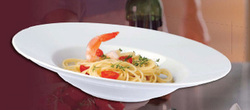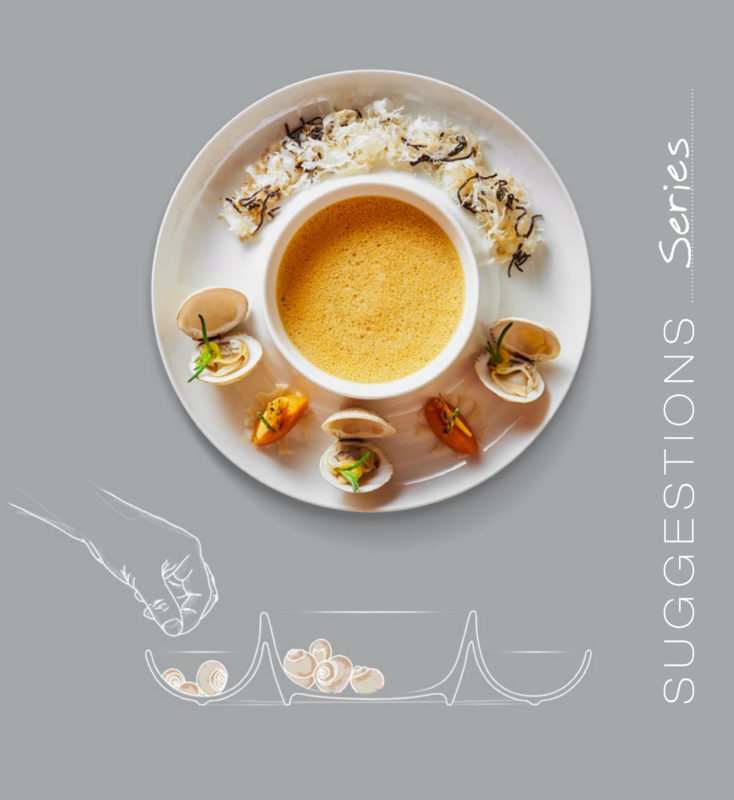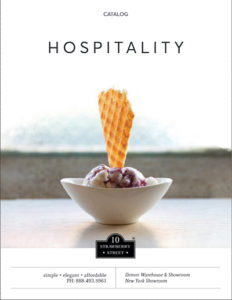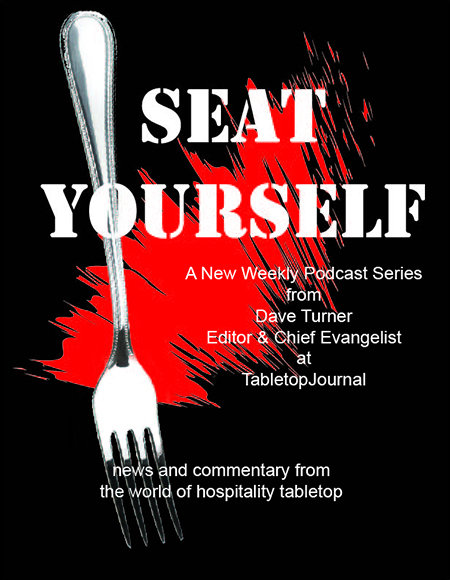The economy is starting to pull out of the doldrums, and restaurant sales are slowly picking up. For 2012, the firm Fitch Ratings is expecting same-store sales growth of 2% to 3%.
As consumers are dining out with greater frequency, the smart restaurateurs realize their patrons’ returns will stretch the acceptance of the “same old, same old”. If a consumer hasn’t dined out as much and visited a favorite restaurant as often, the customer may be more open to trying new venues. The smart operator will welcome patrons back with upgrades – upgrades in menus, service, or tableware. New dinnerware in particular is an easy way to enhance and elevate the dining experience from the mundane to the unexpected. In spite of the gradual economic recovery, margins are still at an all time low. Food costs are spiraling, health care is getting more expensive, and energy cost increases have not yet abated. How can an executive chef or restaurateur afford new dinnerware in this environment? Is it irresponsible to even suggest making such an investment?
The answers are:
A) it is more affordable than imaginable to make an impact;
and
B) it is irresponsible to not wow returning guests in the face of stiff competition.
Enter the idea of “transforming your tabletop” with a few, simple pieces. The first question the operator should ask is, “what is the body color of my dinnerware?” This is an important question to answer in order to offer a consistent presentation to the guests. Fortunately one doesn’t have to be a tabletop guru to find an answer. There are three basic choices – bright white, American white, or bone white. The correct whiteness allows the operator to seamlessly transition in a couple complimentary pieces adding the required “pop” to exceed customer expectations. One also doesn’t need to be a ceramic engineer to determine the type of china to purchase, just recognizing body color will work. Body colors: Bright White (left), American White (center), Bone White (right) Bright white is defined by its description – the starkest white, almost with blue grey hues, to the point of being cold in appearance. When perusing dinnerware catalogs, look for porcelain or “super white” products as perfect choices to blend in with the current dinnerware inventory of bright white china.
American white is the traditional color of long standing dinnerware lines like Buffalo China. It is creamier, slightly darker, and typically thicker than other dinnerware products. There is a warmth to an American white body a lot of consumers find appealing.
Bone white is many times called soft white and is characterized by a consistent lighter creaminess almost the color of linen. Bone white is a warm color, like American white, but lighter in tone. Most bone colored commercial dinnerware is either “high alumina” china or bone china.
Once a basic body color is determined, catalogs and websites can be reviewed for item ideas, and then samples can be ordered. All reputable dinnerware companies gladly provide samples. The best way to get a catalog and sample is by working with your foodservice distributor. Unlike a direct seller of tabletop, the distributor sales rep is an independent authority that can assist you in making the best choice. Just ask your foodservice sales professional for catalogs with dinnerware of the correct body color, and after selecting items to sample your dealer sales rep can order the samples on your behalf. If electronic media is preferred, your dealer sales rep can offer many options on websites to visit. Again, samples can be ordered after reviewing choices on line.
When looking at the catalogs or websites, there are many options on different shapes and styles. Three of the most popular to consider are “deep plates”, geometrics and coupe plates. The name “deep plate” describes the item itself. It is a flat plate with sides that flair up dramatically from the verge or inner well. The higher sides focus the attention on the food and beautifully frames the chef’s creation. Deep plates are very versatile and can be used for every course on the menu.
Geometric shapes are still super trendy and an easy way to offer a memorable difference in presentation to the guest. Squares plates have remained popular for some time, and like deep plates are versatile enough to be used for a variety of courses. Rectangles are also a great shape to consider based on new food trends. Longer presentations are very chic, and rectangles perfectly match this style.
The third option when looking for a specialty piece to transform your tabletop is a coupe style plate. Coupe plates have no rim – it is all plating surface. The food should be the star of the meal, and a simple, clean coupe plate makes this a reality. The plate is so plain, so unadorned, the food will certainly be the most memorable part of the guest’s experience.
After picking the correct body color and a couple stylish pieces to enhance the menu and mood, it is time to make the purchase. The good news is these guidelines are suggested with an eye on cost. By matching body color of the current dinnerware to the accessory pieces, 2 new plates can dramatically change the tabletop. Here is a great guideline in selecting the number of pieces to buy, along with costs.
Let’s assume the restaurant has 120 seats and does 2 turns per meal. The goal is to give each patron sharing a table a different look for one course. This fictitious restaurant will serve 240 meals nightly to 240 guests. A purchase of 80 plates of one style, and 80 of another will give the operator the ability to mix the new inventory in with the old, thus transforming the tabletop and guest experience. The current inventory is still used, the operator simply adds to it with the new items. At an average cost of $15 per plate, this is a $2400 purchase. With 240 meals a night, five nights a week, if the operator can increase cost $0.40 per menu item the new inventory is paid for in a month. Most importantly, the operator has enhanced the guest experience driving customer loyalty and return visits.
The final detail is how to buy the new dinnerware. The best avenue is through a food service tabletop dealer. A dealer sales representative can coordinate samples, delivery, and is invested in the service after the sale more than a direct seller or retail store. A foodservice dealer can also help with subsequent reorders, keep an order history, and will make sure all your purchases are from a reputable manufacturer that can guarantee quality and availability.
To wow your customers on their next visit, transform your tabletop today. It’s as easy as one – two – three. Select body color, pick out some fun pieces, and place an order with a foodservice dealer.
James Schulze Bio –
James Schulze has been in the foodservice industry since 1996 as manufacturer’s rep, dealer sales rep, owner and now senior management with Oneida Ltd.. Schulze has spent his career specifying brands at all price points into foodservice operators ranging from diners to five star hotels. Besides specifying and selling product, Schulze has worked closely with fine tableware factories worldwide manufacturing both foodservice and retail tableware.









